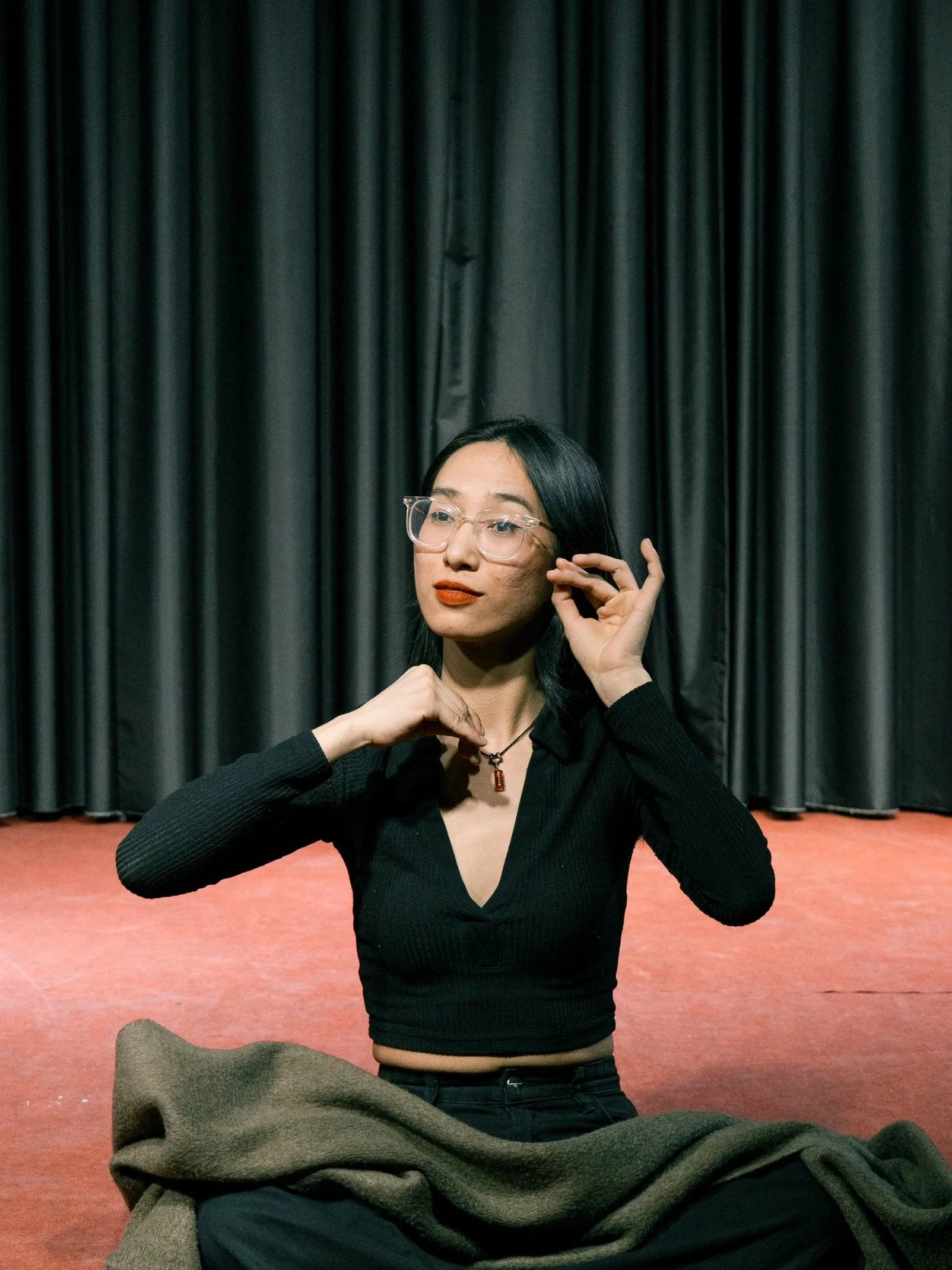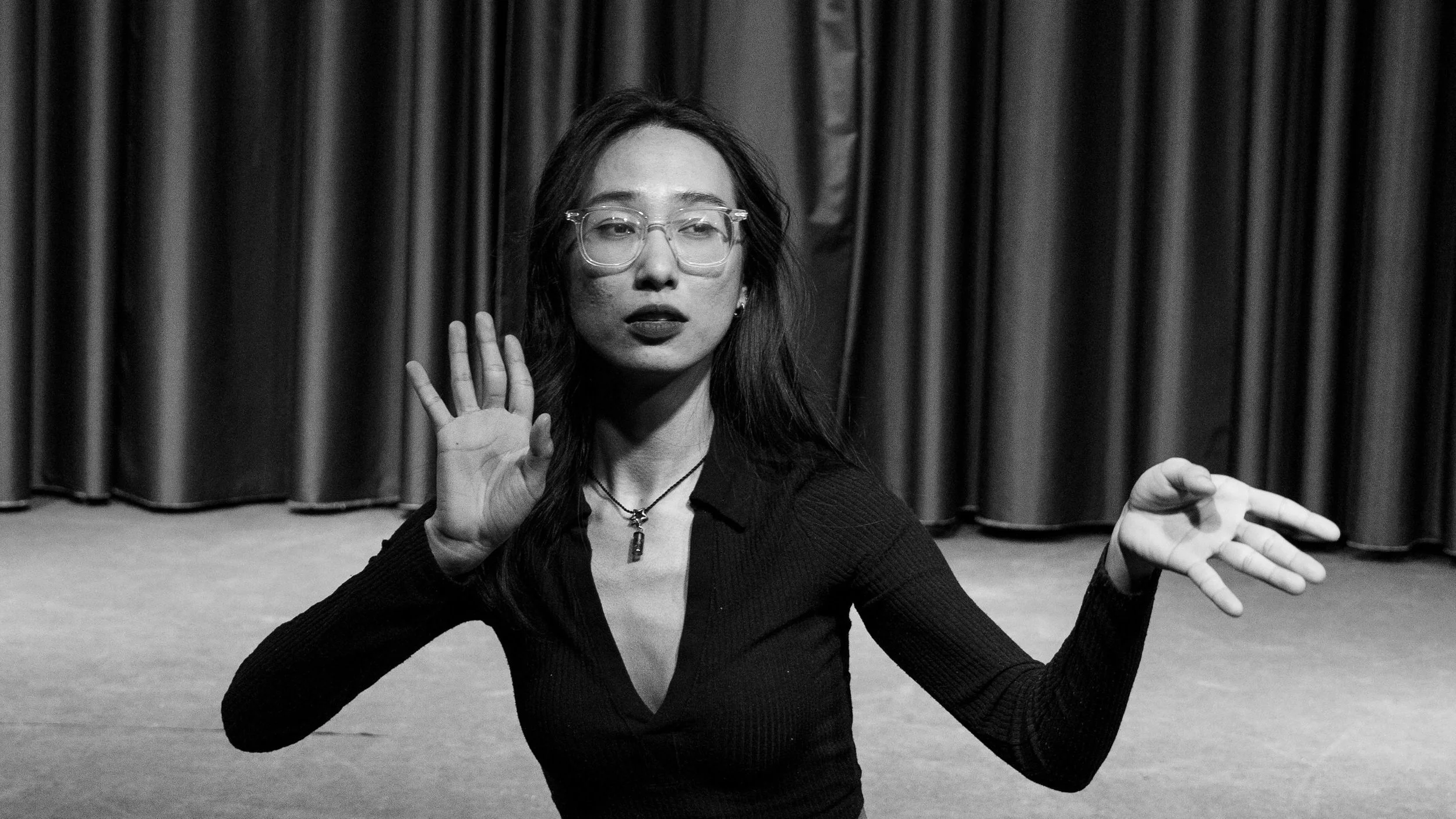One of the greatest challenges in the privilege of moving between languages is to translate a word in a way that fully carries its meaning.
I often feel a strange, almost painful sense of distance from the very words I’m trying to translate into another language. Suddenly, all the tenderness, the careful crafting, the poetic polish I once gave to each sentence feels forced — even alien. That awkwardness, that clumsy naïveté, doesn’t just come from trying to assign foreign words to meanings shaped by the Vietnamese cultural landscape. It is also for the reader to feel, as deeply as we do, the emotional resonance that this language once stirred in our own soul.
Just as
‘Mẫu’ means ‘mother’ in Vietnamese. But it also refers to a goddess — a sacred feminine presence. It resonates with the spirit of the feminine: of nourishment, creation, and protection.
How do I speak of it — this quiet storm in me, each time I say this word?
Làm sao để nói cho bạn nghe, làm cho bạn hiểu, diễn cho bạn thấy sự nhộn nhịp trong lòng tôi khi nghe cái ngôn ngữ này?
When I began working on the Tứ Phủ project, I spent an absurd amount of time just trying to translate its name into another language. With all the love and pride I carry as a child of Vietnam, I ended up settling for an explanation that was long-winded, roundabout, and still incomplete. Clumsy, yet somehow, with the gentle nods of understanding from Western listeners, I realized that even my awkward words held real power.
On stage, I became the expert, the captain of the ship, the one on the heavier end of the scale. They were curiously, excitingly drawn to something so unfamiliar. Some approached eagerly, asking question after question, wanting to understand this ritual from a faraway place. Others kept a respectful distance, just quietly observing the girl in the red headscarf from afar.
And then came the flowers, the offerings, the sulking, the tears—every emotion from joy to sorrow was allowed, once that velvet curtain separated us. I smiled quietly, thinking: had we been in Vietnam, I might have been showering them with money. And maybe they were smiling too, hiding their confusion or doubt behind polite applause.
We all carry secrets the other side will never fully grasp.

Khi bắt tay vào làm dự án Tứ Phủ, tôi thực sự đã mất rất nhiều thời gian để chuyển cái tên này sang ngôn ngữ khác. Với tất cả tình yêu và sự tự hào về nguồn cội của một người con Việt Nam, tôi chọn một cách giải thích vừa dài, vừa lòng vòng, lại chẳng đủ ý. Vụng về là thế, nhưng với những cái gật gù đầy chấp nhận của các bạn Tây lông, tôi nhận ra, lời nói của mình có một sức mạnh lớn lắm, kể cả khi nó vụng về. Trong buổi trình diễn của tôi, tôi là chuyên gia, là thuyền trưởng, là người ở đầu nặng hơn trên cán cân quyền lực. Họ tò mò, hứng khởi trước một chủ đề mới. Có những người mạnh dạn hơn, họ dồn dập tiến tới như muốn biết tường tận về thứ nghi lễ ở một nơi xa lạ này. Những người khác thì lại dè dặt hơn. Họ ngắm nhìn từ xa với đầy sự tôn trọng trước cô gái trùm một chiếc khăn đỏ trên sân khấu. Rồi tung hoa, tung quà, giận dỗi, khóc thương, tất cả mọi hỷ, nộ, ái, ố đều được cho phép khi tôi cách họ một tấm màn nhung.
Tôi thầm cười khi biết rằng, đáng ra, tôi đã có thể tung tiền cho họ nếu tôi đang ở Việt Nam. Và có lẽ họ cũng thầm cười để giấu đi sự hoài nghi, khó hiểu trước một nghi lễ lạ.
Chúng ta đều có những điều giấu kín với bên còn lại.
And yet, we still came together. They still showed up to witness the "four palaces" of Vietnamese culture—perhaps imagining celestial goddesses of the sky, earth, water, and mountains residing there. They live there because the Vietnamese people revere these deities—a kind of reverence that exists in the untouchable space between the sacred and the human.
Maybe that was all they could gather about Đạo Mẫu from my clumsy explanation.
Definitely not a bad start.
Nhưng rồi chúng ta vẫn tới với nhau. Họ vẫn tới để xem “4 cái cung điện” của văn hoá Việt Nam, nơi mà chắc là những nữ thần trời, đất, nước, núi ở. Họ được ở đó vì người dân Việt Nam tôn thờ họ, một kiểu tôn thờ không thể chạm tới giữa đấng thiêng liêng và người phàm.
Có thể đó là tất cả những gì họ có thể liên tưởng về Đạo Mẫu qua cái cách giải thích vô duyên của tôi.
Một khởi đầu không hề tệ.
Photo: nguoigao
Haven't seen
yet?
Check out my website to be up-to-date with my work
About Tứ Phủ
Where to find the goddesses


